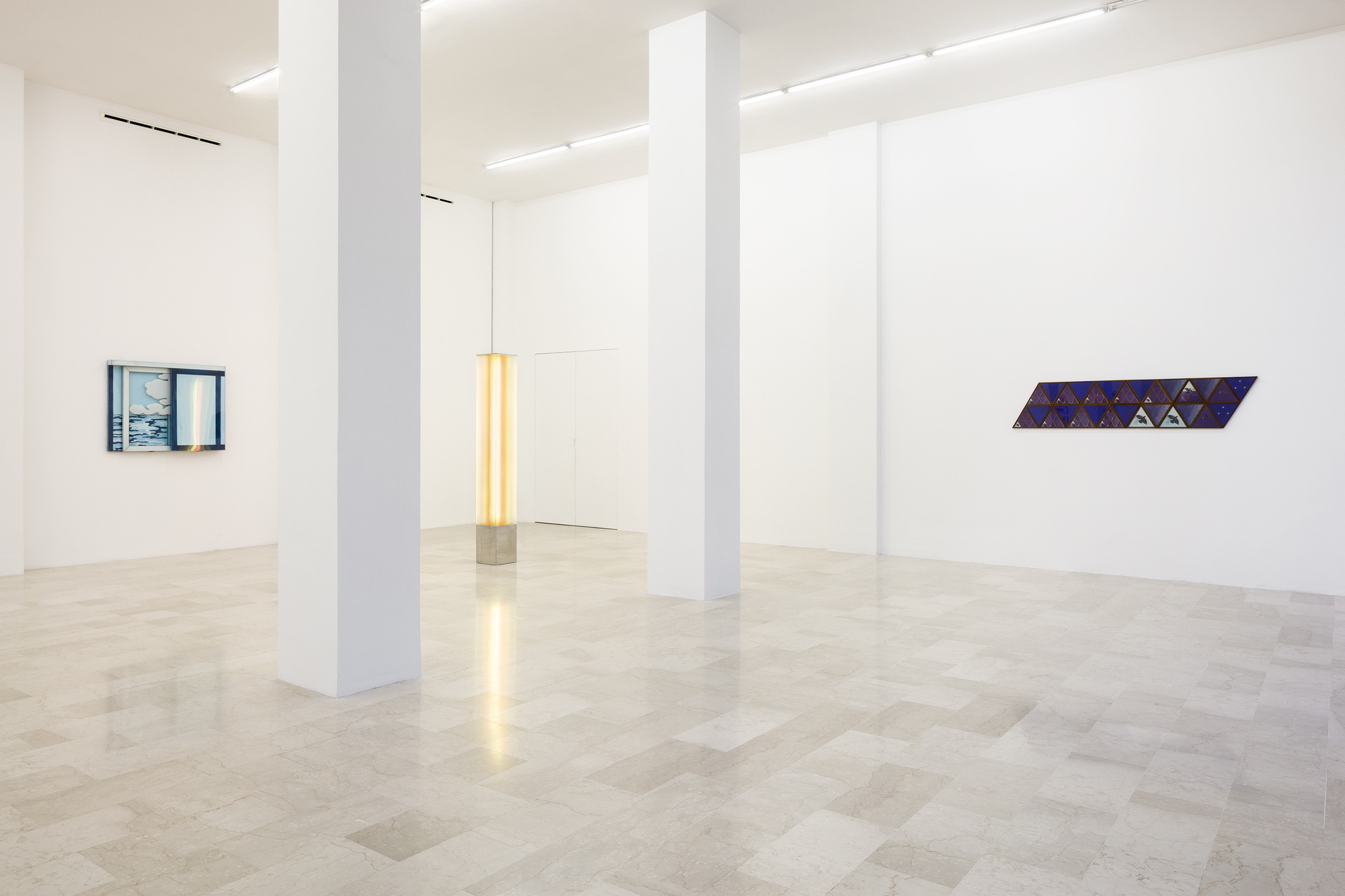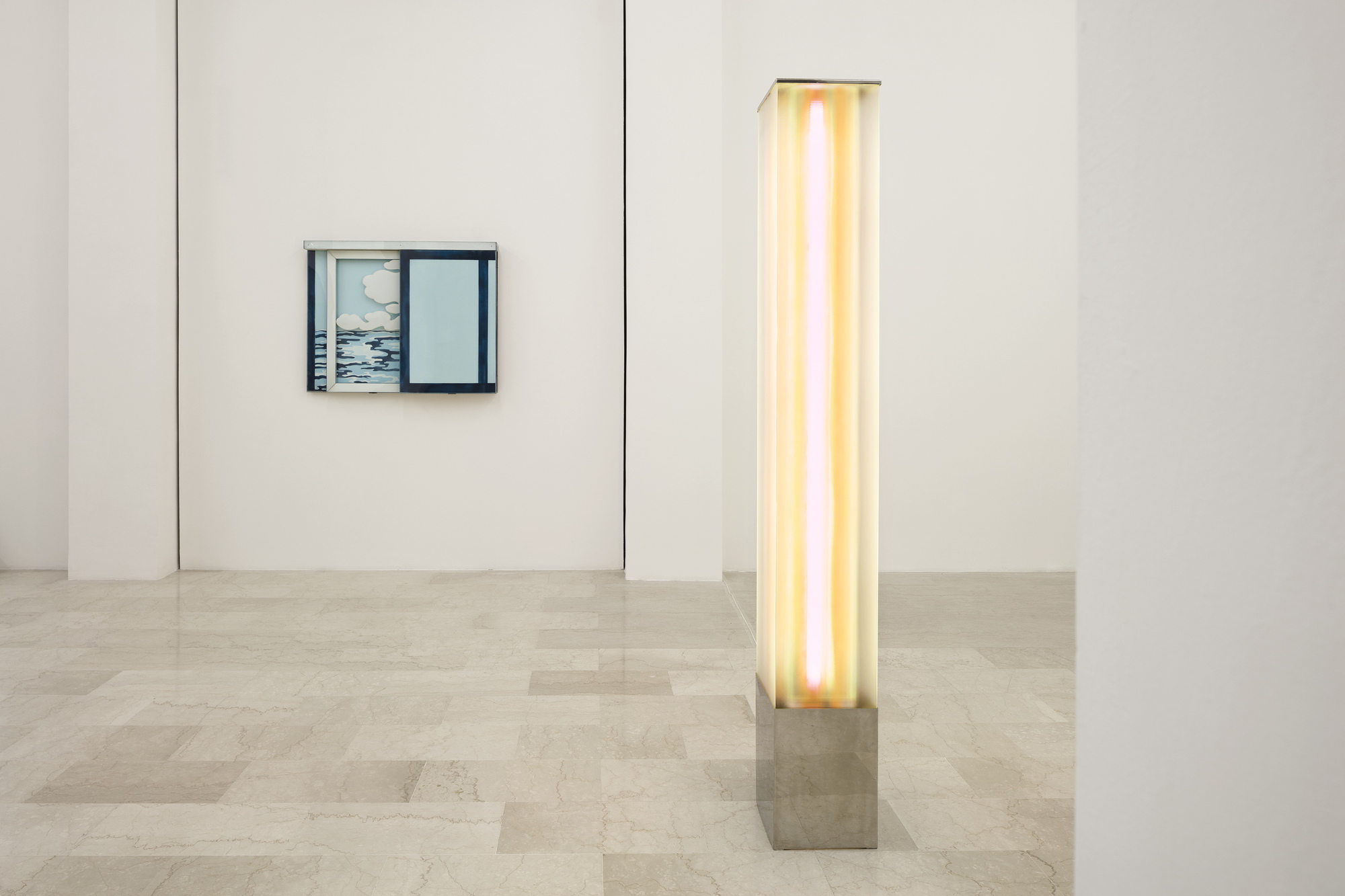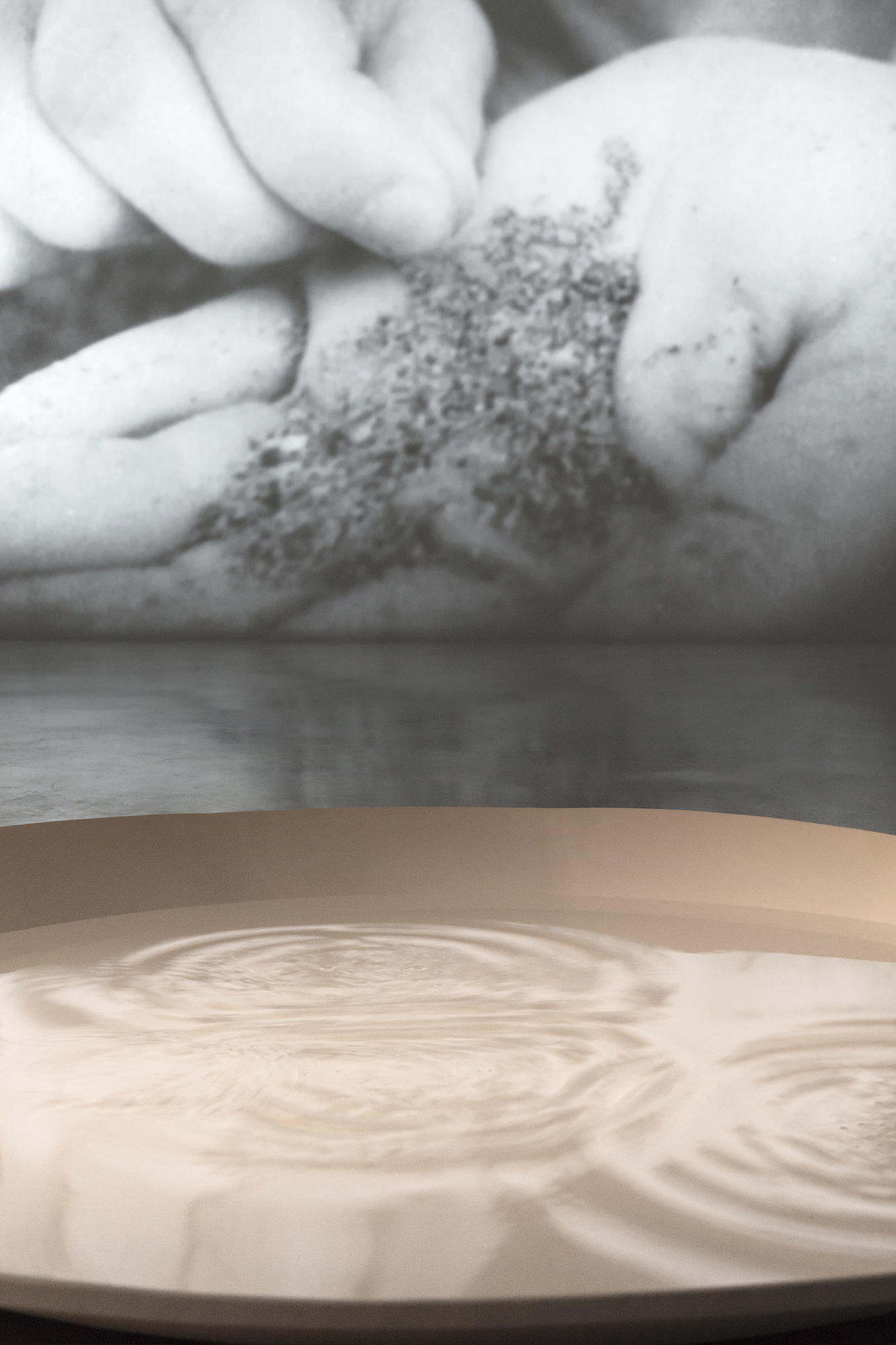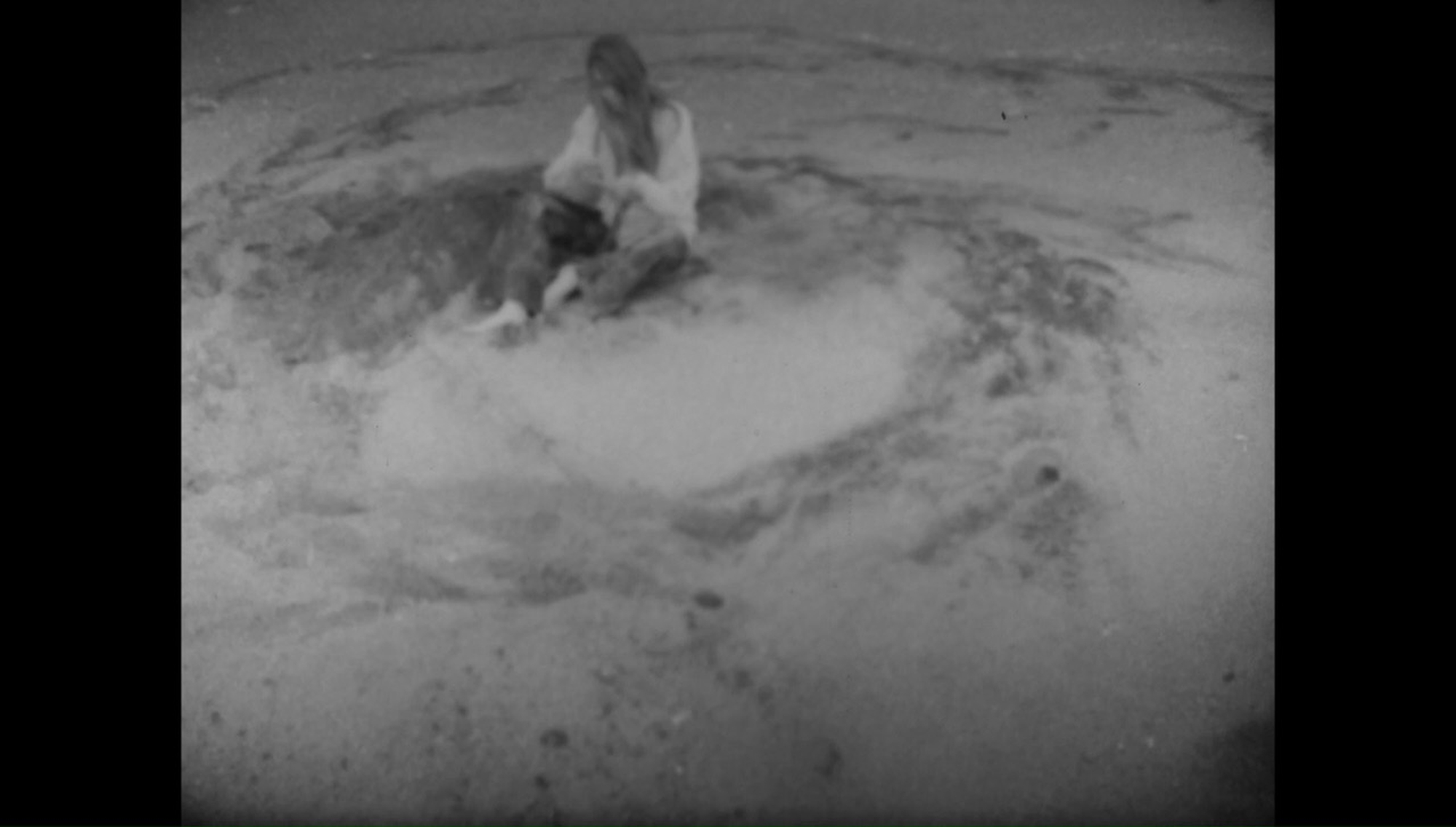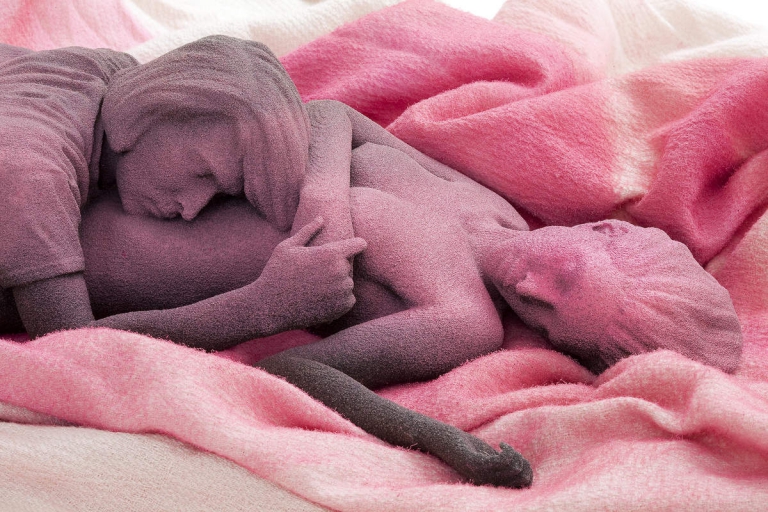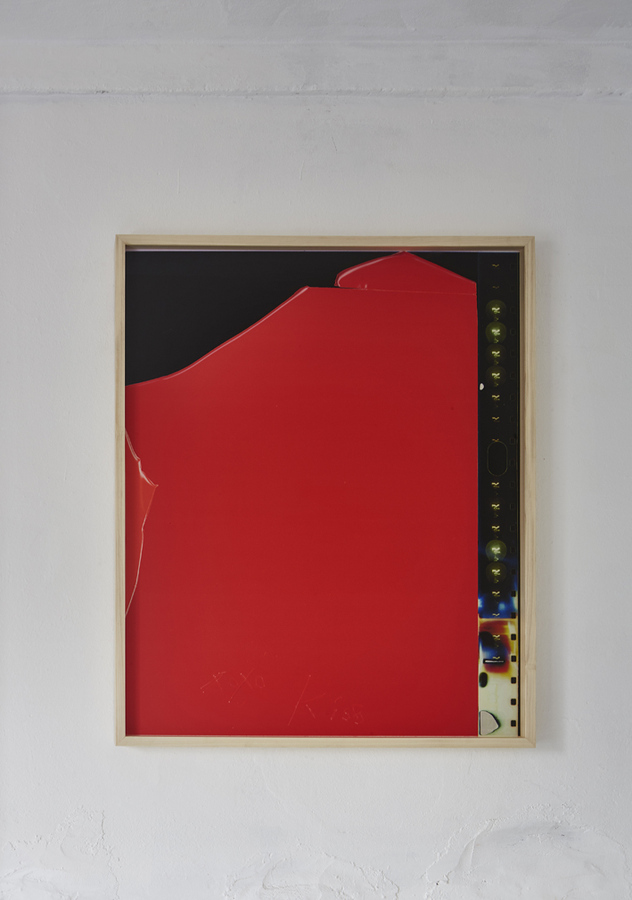Artist: Laura Grisi
Exhibition title: Hypothesis On Infinity
Venue: P420, Bologna, Italy
Date: April 7 – June 2, 2018
Photography: all images copyright and courtesy of the artist and P420, Bologna
P420 is pleased to announce the solo show by the Italian artist Laura Grisi, who passed away in Rome in December.
Laura Grisi’s work has always been seen as part of Italian Pop Art, but from the outset she actually ranged into various lines of current international artistic research, bringing forceful personality to her explorations.
The first mature works date back to 1964, along with her first participation in solo and group shows, including the Rome Quadriennale (1965), a show at Galleria dell’Ariete in Milan (1965) and the Venice Biennale (1966). In this period Laura Grisi worked on the Variable Paintings and the Neon Paintings, complex representations of an alienating urban context in which paintings on canvas were joined by mobile panels, structures in wood, transparent elements in plexiglas and neon lights.
In this period she met and married Folco Quilici, already a well-known documentary filmmaker, bringing the possibility of spending much of the year in travels to faraway lands where tribal and primitive cultures still existed. The Andes, South America, Africa, Polynesia, long periods – up to six months at a time – in which to experience an overwhelming, flourishing natural setting, in which to reflect on the power of nature and its laws, the incomparable force of a sunset, the unique atmosphere of rain. She made Seascape (1966), Sunset Light (1967) – both in the show – and Antinebbia (1968), works in which technological methods are combined with natural subjects.
“I didn’t want a painting, a sculpture containing air, earth, or water. I didn’t want air, earth, or water to become objects. I wanted to recreate the experience of natural phenomena.”¹
In a short time span, Grisi made works like Wind Room (Teatro delle Mostre, La Tartaruga, Rome, 1968), Rain Room (1968), Air Room (1968), Refraction (1968), Drops of Water (1968), Stars (1968), Rainbow (1968), just to name a few.
“I wanted to create the natural effect of the sound of water falling into water, to create an environment where one might meditate, listening to the noise of the rain.”²
Extended observation of nature, living inside it day by day, inevitably confronts us with its dimension, forcing us to take stock of a different scale, a space and time whose measure has to do with the idea of infinity, perhaps an infinite idea. In 1969 she made the video The Measuring of Time, a single spiral shot in which the artist repeats the infinite and unfinishable gesture of counting grains of sand in the desert.
Grisi’s nature is powerful and evocative, emotional and intense, but also always ordered and composed, governed by the laws which the artist, fascinated since childhood by her father’s passion for physics and mathematics, always glimpsed and grasped. In Pebbles (1973), Laura Grisi arranged and photographed five small stones in all of their 120 possible combinations, while in Blue Triangles (1981) a dove crosses a blue space that seems like the sky, but precisely when it appears to be about to easily complete its route, the space breaks up into multiple spaces, and others still, infinitely splitting and imprisoning the dove in an infinite space that cannot be crossed.
A scientific approach to a nature that is only apparently explicable and finite, about which Laura Grisi, through her works, formulated her own hypotheses.
One of her works is currently on view at the MAC USP in São Paulo, in the exhibition Matrix for Actual Time curated by Jacopo Crivelli Visconti. The GAM in Turin recently included one of her works in the exhibition Vero Amore: Italian Pop Art from the GAM Collections and acquired two of her videos, The Measuring of Time (1969) and Wind Speed 40 Knots (1968). Two other works will be shown at the MADRE in Naples, starting in October.
Born in Rhodes (Greece), Grisi lived in Rome and New York, after studying at the Ecole des Beaux Arts in Paris and the Scuola d’Arte in Rome. She had her first solo shows at the galleries Il Segno (Rome, 1964) and dell’Ariete (Milan, 1965). From 1968 her works were shown in solo shows abroad, at Galerie E. M. Thelen (Essen, 1968 and Cologne, 1970), the Leo Castelli Gallery in New York (1973, 1975, 1976, 1978, 1981, 1986, 1992), Van Abbemuseum (Eindhoven, 1976) and Galerie Konrad Fischer (Düsseldorf, 1978, 1994). At the same time, in Italy, she had solos shows at the galleries Marlborough (Rome, 1969), del Naviglio (Milan, 1970), François Lambert (Milan, 1976, 1980), Saman (Genoa, 1975, 1978), Marilena Bonomo (Bari, 1977), Ugo Ferranti (Rome, 1979, 1981, 1995). She took part in many group shows and events, including: the Rome Quadriennale (1965, 1973, 1986), the Venice Biennale (1966, 1986), Young Italians (Institute of Contemporary Art, Boston and The Jewish Museum, New York, 1968), Prospect 68 (Kunsthalle, Düsseldorf, 1968), Teatro delle Mostre (Galleria La Tartaruga, Rome, 1968), Earth Air Fire Water: Elements of Art (Museum of Fine Arts, Boston, 1971), Contemporanea (Villa Borghese, Rome, 1974) and the more recent group shows Anni ’70 a Roma (Palazzo delle Esposizioni, Rome, 2013), Graham Foundation (Chicago, 2014) and Accademia di Brera (Milan, 2015). Her works are included in the collections of important museums, among which the Museum of Modern Art of New York, Brooklyn Museum, New York; Weisman Museum, Los Angeles; Van Abbemuseum of Eindhoven, Holland; Ludwig Forum of Aachen, Germany; Galleria Civica d’Arte Moderna, Turin; and Galleria Nazionale d’Arte Moderna, Rome.
¹ Germano Celant, Laura Grisi, Rizzoli International Publications, New York, 1989.
² Germano Celant, ibid.
Laura Grisi, Hypothesis On Infinity, 2018, exhibition view, P420, Bologna
Laura Grisi, Blue Triangles, 1981, color photographs, ink on card, 28 parts, cm.23×26 each, cm.46×214 overall, Courtesy P420, Bologna
Laura Grisi, Seascape, 1966, acrylic on canvas, plexiglas, sliding panels, cm.100hx122x12 Courtesy the Estate & P420, Bologna
Laura Grisi, Seascape, 1966, acrylic on canvas, plexiglas, sliding panels, cm.100hx122x12 Courtesy the Estate & P420, Bologna
Laura Grisi, Seascape, 1966, acrylic on canvas, plexiglas, sliding panels, cm.100hx122x12 Courtesy the Estate & P420, Bologna
Laura Grisi, Seascape, 1966, acrylic on canvas, plexiglas, sliding panels, cm.100hx122x12 Courtesy the Estate & P420, Bologna
Laura Grisi, Sunset Light, 1967, neon, plexiglass, cm.219x30x30, Courtesy the Estate & P420, Bologna
Laura Grisi, Hypothesis On Infinity, 2018, exhibition view, P420, Bologna
Laura Grisi, Pebbles, 1973, 150 color photographs, cm.8×13 each in 25 frames, cm.120×490 overall, Courtesy P420, Bologna
Laura Grisi, From One to Four Pebbles, 1972, digital video from color film in 16mm, 4’30’’, ed. of 5+2ap, Courtesy the Estate & P420, Bologna
Laura Grisi, Hypothesis On Infinity, 2018, exhibition view, P420, Bologna
Laura Grisi, Hypothesis On Infinity, 2018, exhibition view, P420, Bologna
Laura Grisi, Hypothesis On Infinity, 2018, exhibition view, P420, Bologna
Laura Grisi, Hypothesis On Infinity, 2018, exhibition view, P420, Bologna
Laura Grisi, Hypothesis On Infinity, 2018, exhibition view, P420, Bologna
Laura Grisi, Drops of Water, 1968, drip system and painted metal vessel, ø cm.200, Courtesy the Estate & P420, Bologna
Laura Grisi, The Measuring of Time, 1969, b-w digital video from 16mm film, 5’45’’, ed.5+2ap, Courtesy the Estate & P420, Bologna
Laura Grisi, The Measuring of Time, 1969, b-w digital video from 16mm film, 5’45’’, ed.5+2ap, Courtesy the Estate & P420, Bologna


